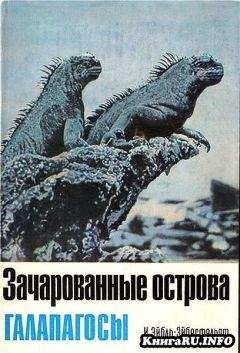Литература и примечания
1. Tinbergen N. (1963). The study of instinct. Oxford University Press, London.
2. Gregory R.L. (1966). Eye and brain. Weidenfeld and Nicolson, London.
3. Hochberg J.E. (1964). Perception. Prentice Hall. Englewood Cliffs, N.J.
4. Gombrich Е.Н. (1979). The sense of order. A study of the psychology of decorative art. Phaidon, Oxford.
5. Schuster M., Beisl H. (1978). Kunst-Psychologie «Wodurch Kunstwerke wirken». Du Mont, Koln.
6. Lawlor R. (1982). Sacred geometry. Thames and Hudson, New York.
7. Ertel S. (1981). Wahrnehmung und Gesellschaft. Pragnanz in Wahrnehmung und Bewusstsein. Semiotik, 3: 107, 41.
8. Werlheimer M. (1927). Gestaltpsychologie. In: Saupe E. (ed.). Einfuhrung in die neuere Psychologie. A.W. Zickfeldt, Osterwieck am Harz.
9. Sander F. (1931). Gestaltpsychologie und Kunsttheorie. Ein Beitrag zur Psychologieder Architektur. Neue Psychol. Studien, 8: 311-333.
10. Frank H. (1960). Uber grundlegende Satze der Informationsasthetik. Grundlagen-studien aus Kybernetik und Geisteswissenschaft, 1: 25-32.
11. Metzger W. (1936). Gesetze des Sehens. Suhrkamp, Frankfurt/Main.
12. Dorner D., Vehrs W. (1975). Asthetische Befriedigung und Unbestimmtheitsreduction, Psychol. Rev., 37: 321-334.
13. Hospers J. (1969). Introductory readings in aesthetics. The Free Press, New York.
14. Forrest D. W. (1974). Francis Gallon, the life and work of a Victorian genius, PaulEiek, London.
15. Nguyen-Glausen A. (1987). Ausdruck und Beeinflussbarkeit der kindlichen Bildnerei. In: von Hohenzollern J.Prinz, Liedtke M. (eds.) Vom Kritzein zur Kunst, JuliusKlinghardt, Bad Heilbrunn.
16. Rensch B. (1957). Asthetische Faktoren bei Farbund Formbevorzugungen von Affen. Z.Tierpsychol.,14:71-99.
17. Rensch В. (1958). Die Wirksarnkeit asthetischer Faktoren bei Wirbeltieren. Z.Tierpsychol., 15: 447-461.
18. Morris D. (1962). The biology of art. Methuen, London.
19. Ethology-objective research of human and animal behavior from a biologicalstandpoint, especially considering species-specific adaption and the evolution of behavior.
20. Tinbergen N. (1951). The study of instinct. Oxford University Press, London.
21. Lorenz K. (1943). Die angeborenen Formen moglicher Erfahrung. Z. Tierpsychol., 5:
22. Simner M. L. (1971). Newbom’s response to the cry of another infant. Developmental Psychology, 5:136-150.
23. Koenig 0. (1975). Urmotiv Auge. Neuentdeckte Grundzuge menschlichen Verbaltens. Piper, Miinchen.
24. Elbi-Eibesfeldt 1. (1975). Ethology — The Biology of Behavior, 2nd edn. Holt, Rinehart and Winston, New York.
25. Eibl-Eibesfeldt 1. (1975). Krieg und Frieden aus der Sicht der Verhaltensforschung.Piper, Munchen.
26. Eibl-Eibesteldt 1. (1976). Menschenforschung auf neuen Wegen. Molder, Wien.
27. Coss R. G. (1970). The perceptual aspects of eye — spot patterns and their relevance togaze behavior. In: Hutt C., Hutt S. J. (eds.). Behavior studies in psychiatry. Pergamon Press, Oxford, 121-147.
28. Bolk L. (1926). Das Problem der Menschwerdung. Gustav Fischer, Jena.
29. Schiefenhovel W. (1984). Der Witz als transkulturelles asthetisches Problem-Versuch einer biologischen Deutung. Mitteil. d. Anthrop. Ges. Wien (MAGW), 114:
30. Rensch В. (1963). Versuche uber menschliche «Auslosermerkmale» beider Geschlechter. Z.Morph. Anthrop., 53: 139-164.
31. Eibl-Eibesfeldt 1. (1970). Liebe und Hass. Zur Naturgeschichte elementarer Verhaltensweisen. Piper, Munchen.
32. Eibl-Eibesfeldt 1. (1984). Die Biologic des menschlichen Verhaltens. Piper, Munchen.
33. Cunningham M. R. (1986). Measuring the physical in physical attractiveness: Quasi-72 Глава 2experiments on the sociology of female facial beauty. J. of Personality and Social Psychology, 50:925-935.
34. Fauss R. (1988). Zur Bedeutung des Gesichts fur die Partnerwahl. Homo, 37: 188- 201.
35. Langlois J. H., Roggman L. A., Casey R. L., Ritter J. M., Rieser-Danner L. A., Jenkins V. Y. (1987). Infant preferences for attractive faces: Rudiments of a stereotype? Developmental Psychology, 23(3): 363-369.
36. Eibl-Eibesfeldt 1. (1979). Ritual and ritualization from a biological perspective. In: Cranach M. von, Foppa K., Lepenies W., Ploog D. (eds.) Human ethology: Claims ans limits of a new discipline. Cambridge University Press, Cambridge.
37. Ball W., Tronick ?.(1971). Infant responses to impending collision: Optical and real. Science, 171: 818-621.
38. Ploog 0., Blitz J.. Ploog F. ( 1963). Studies on social and sexual behavior of the squirrel monkey (Saimiri sciureus). Folia primat., 1: 29-66.
39. Wickler W. (1966). Ursprung und biologische Deutung des Genitalprasentierens manniicher Primaten. Z. Tierpsychol., 23: 422-437.
40. Wickler W. (1967). Socio-sexual signals and their intraspecific imitation among primates. In: Morris D. (ed.) Primate ethology. Weiderfeld and Nicolson, London, pp. 69-147.
41. Eibl-Eibesfeldt 1. (1970). Manniiche und weibliche Schutzamulette im modernen Japan. Homo, 21:178-188.
42. Eibl-Eibesfeldt /., Wickler W. (1968). Die ethologische Deutung einiger Wachterfiguren auf Bali. Z. Tierpsychol., 2S: 719-726.
43. Basedow H. (1906). Anthropological notes on the western coastal tribes of the northern territory of South Australia. Trans Roy. Soc. South Australia, 31: I-62.
44. Eibl-Eibesfeldt 1., Sutterlin С. (1985). Das Bartweisen als apotropaischer Gestus. Homo, 36:241-250.
45. Hansmann L., Kriss-Rettenbeck L. (1966). Amulett und Talismann. Erscheinungsform und Geschichte. W. Callwey, Munchen.
46. Sutterlin C. (1987). Mittelalterliche Kirchenskulptur als Beispiel universaler Abwehrsymbolik. In: Hohenzollern J.Prinz v., Liedtke M. (eds.). Vom Kritzein zur Kunst. Stammes-/und individual-geschichtliche Komponenten der kunstlerischen Fahigkeiten. J.Klinkhardt, Bad.Heilbrunn, pp. 82-100.
47. Fehling D. (1974). Ethologische Uberlegungen aufdem Gebiet der Altertumskunde. Monogr. z. Klass. Alterturnswissenschaft 61, C.H. Beck, Munchen.
48. Hass H. (1968). Wir Menschen. Das Geheimnis unseres Verhaltens. Molden, Wien.
49. Pawlik J. (1973). Theorie der Farbe. 3rd edn. M.DuMont Schauberg, Koln.
50. Kreitler H., Kreitler S. (1980). Psychologie der Kunst. W.Kohlhammer, Stuttgart.
51. ltten J. (1961). Kunst der Farbe. Subjektives Erieben und objectives Erkennen der Wege zur Kunst. Maier, Ravensburg.
52. Birren F. (1950). Color psychology and therapy. McGraw-Hill, New York.
53. Orians G. H. (1980). Habitat selection: General theory and applications to human behavior. In: Lockard J. S. (ed.). The evolution of human social behavior. Elsevier, New York, pp. 40-66.
54. Eibl-Eibesfeldt 1. (1982). Warfare, man’s indoctrinability and group selection. Zeitschrift f. Tierpsychol., 60: 177-198.
55. Wobst H. M. (1977). Stylistic behavior and information exchange. In: Cleland C. E. (ed.). Papers for the director: Research, essays in honor of James B. Griffin. Anthropology Papers. Museum of Anthropology, University of Michigan, 61: 317-342.
56. Wiessner P. (1983). Style and social information in Kalahari San projectile points. American Antiquity, 48: 253-276.
57. Koenig 0. (1968). Biologic der Uniform. Naturwiss u. Med. (5) 22: 3
19, 23: 40- 50, Boehringer, Mannheim.
58. Koenig 0. (1970). Kultur und verhaltensforschung. dtv, Munchen.
59. Biocca E. (1970). Yanoama. The narrative of a white girl kidnapped by Amazonian Indians. E.P. Dutton, New York.
60. Lommel А. (1962). Motiv und Variation in der Kunst des zirkumpazifischen Raumes. Publikationen des Staati. Museums fur Volkerkunde, Munchen.
61. Wickler W., Seibt U. (1982). Alt-Ekuadorianische Spinnwirtel und ihre Bildmotive. Beitrage zur allgemeinen und vergleichenden Archaologie, 4: 315-419.
62. Kneutgen J. (1964). Beobachtungen uber die Anpassung von Verhaltensweisen an gleichformige akustische Reise. Z.f.Tierpsychol.. 21:
763-779.
63. Hoist E. von (1935). Uber den Prozess der zentralen Koordination. Pflug. Arch., 236:149-158.
64. Hoist E. (1936). Versuche zur Theorie der relativen Koordination. Pflug. Arch., 237
65. Kneutgen J. (1970). Eine Musikform und ihre biologische Function. Uber die Wirkungsweise der Wiegenlieder. Zeitschr. exp. angew. Psychologie, 17: 245-265.
66. Bolinger D. (1978). Intonation across languages. In: Greenberg J.H., Ferguson C.A., Maravcsik E.A. (eds.). Universals of human language, 2. Phonology. Stanford University Press, Stanford, pp. 471-524.
67. Sedlacek К., Sychra A. (1963). Die Melodie als Faktor des emotionellen Ausdrucks. Folia phoniatrica, 15: 89-98.
68. Eggebrecht R. (1983). Sprachmelodische und musikalische Forschungen im Kulturvergleich. Dissertation, University of Munich.
69. Schroder M. (1977). Untersuchungen zur Identifikation von Klageliedern aus verschiedenen Kulturen-Analyse der rhytmischen Struktur der Testlieder. Diplomarbeit Universitat Munchen.
70. Eibl-Eibesfeldt 1. (1979). Human ethology: concepts for the sciences of man. The behavioral and brain sciences, 2: I-57.
71. Pitcairn Т. R., Schleidt M. (1976). Dance and decision: An analysis of a courtship dance of the Medlpa, New Guinea. Behavior, 58: 298-316.
72. Eibl-Eibesfeldt 1. (1972). Die !Ko-Buschmanngesellscheft.
Gruppenbindung und Aggressionskontrolle. Monographien zur Humanethologie 1. Piper, Munchen.
73. Sbrzesny H. (1976). Die Spiele der !K.o-Buschleute unter besonderer Berucksichtigung ihrer sozialisierenden und gruppenbindenden Funktionen. Monographien zur Humanethologie 2. Piper, Munchen.
74. Eibl-Eibesfeldt 1. (1980). G/wi-Buschleute (Kalahari)-
Krankenheilung und Trance. Homo, 31:67-78.
75. Eibl-Eibesfeldt 1. (1980). Strategies of social interaction. In: Plutschik R. (ed.) Emotion: Theory, research and experience. Theories of emotion, vol. I, Academic, New York, pp. 57-80.
76. Heeschen V., Schiefenhovel W., Eibl-Eibesfeldt 1. (1980). Requesting, giving, and taking: The relationship between verbal and nonverbal behavior in the speech community of the Eipo, Irian Jaya (West New Guinea). In: Key M. R. (ed.) The relationship of verbal and nonverbal communication. Contributions to the sociology of language. Mounton, The Hague, pp. 139-166.
77. Heeschen V. (1985). Probleme der rituellen Kommunikation. In: Rehbein J. (ed.). lnterkulturelle Kommunikation. G.Narr, Tubingen, pp. 150-165.
78. Eibl-Eibesfeldt /.(1981). Ethologische Kommunikationsforschung: Ausdrucksbewegungen, Interactionsstrategien und Rituale des Menschen aus biologischer Sicht. Medias res., Burda Verlag, Offenburg, pp. 159-193.
79. Budack К. F. R. (1983). A harvesting people on the south Altantic coast. South African J.of Ethnology, 6: 1-7.
80. Keesing R.M. (1981). Cultural anthropology. A contemporary perspective. Holt, Rinehart and Wilson, New York, p. 82
81. Erikson E.H. (1966). Ontogeny ofritualization in man. Philos. Trans. Roy. Soc. London B, 251: 337-349.
82. Lorenz К. (1959). Die Gestaltwahrnehmung als Quelle wissenschaftlicher Erkenntis. Z. angew u. exp. Psychol., 6: 118-165.
83. Margulies S. (1977). Principles of beauty. Psychological Reports, 41: 3—11.
1
Тенденция к сохранению у взрослого организма черт, свойственных раннему этапу
развития. — Прим. ред.




